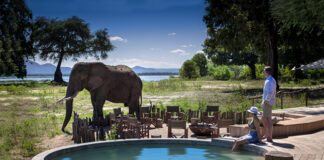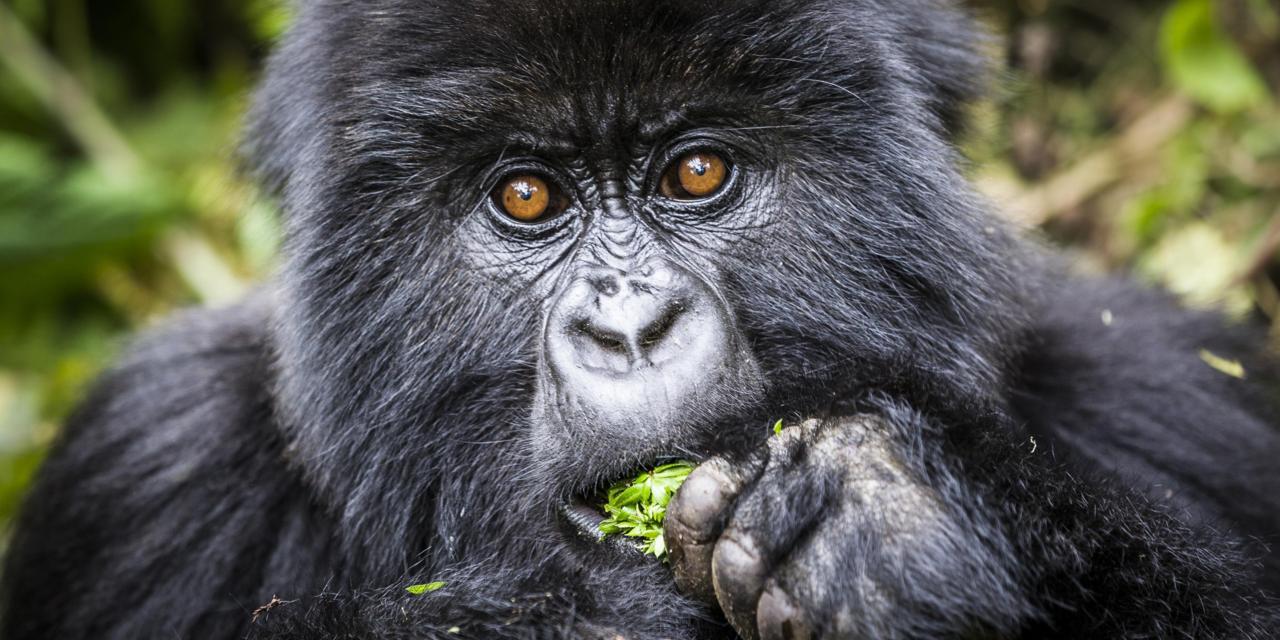Bangweulu Wetlands is a unique wilderness destination. This massive wetland area is difficult to explore and very seasonal, but it is home to the much localized black lechwe. Thousands of these semi-aquatic antelope can be seen wading through the water.
Aside from the lechwe, the park is mainly a birding destination with the rare, sought-after shoebill stork being the main attraction. The wetlands are also home to many small communities, who are benefiting from being involved in local conservation programs.
Blue Lagoon National Park
This park has recently reopened after a long period under the control of the Ministry of Defence. Poaching has been rife, and it will take some time for wildlife numbers to re-establish themselves.
The location on the Kafue Flats makes it a birders hotspot, and there are hundreds of endemic Kafue lechwe on the floodplains. The park is undeveloped and only limited, self-catering chalets are available.
Kafue National Park is one of the largest parks in Africa. For self-drive visitors, the park is the most accessible in Zambia, with a number of quality lodges just off the Lusaka-Mongu Road, which bisects the park.
Wildlife viewing is great, with leopard sightings a major feature. Animals can be quite shy, though, compared to animals in some of the more popular parks. Four of the Big Five are easily seen with rhino absent and the park hosts a wide variety of antelope.
Kasanka National Park is the only privately managed national park in the country. It is run by a charity, the Kasanka Trust, and all proceeds go back into conservation and the surrounding communities.
A visit here is often paired with a stop at the Bangweulu Wetlands. The park is not a classic wildlife destination, but highly rewarding for people interested in birds. Part of the park’s habitat is swamp, and the shy and elusive sitatunga antelope is easily seen.
Liuwa Plain is Zambia’s hottest, off-the-beaten-track destination. The park was neglected for many years but recently came under the African Parks Foundation umbrella.
Following this development, Norman Carr Safaris has opened a new, luxury, five-star lodge in 2017 and this opens up the park for high-end tourism.
The park is home to a spectacular wildlife migration, involving thousands of blue wildebeest, zebra and other grazers, which gather at the beginning of the Wet season.
Lochinvar is situated on the southern edge of the Kafue Flats. It isn’t a great park for wildlife viewing, and there are no tourist facilities. It is, however, a great destination for dedicated birders.
The Kafue lechwe is the most interesting animal in the park. More than 30,000 individuals are crammed around the lagoon and fights between territorial males are a common sight.
Lower Zambezi National Park
This park is set in the Zambezi Valley, on the northern bank of the Zambezi River. Mana Pools National Park hugs the river on the Zimbabwean side. The mighty Zambezi is an icon in Africa and this park won’t disappoint.
The wildlife is plentiful, with four of the Big Five easily spotted (rhino is absent). The real attraction is canoeing on the Zambezi. There is nowhere else where you can see such variety and sheer numbers of animals from this exciting vantage point.
Luambe National Park
This small, little-known park is located in the Luangwa Valley, between North and South Luangwa. There is one Dry season lodge, and if you visit this park, you’ll probably have it to yourself.
Wildlife densities are increasing, but are still significantly lower than in neighbouring parks. The lodge is located at the river, and elephant are regularly seen coming to drink. Activities include game drives, night drives and walking safaris.
Lukusuzi National Park
The park is located on the eastern escarpment of the Luangwa Valley, between North and South Luangwa national parks. There are no facilities in Lukusuzi. There is a game scout camp, with no management, and there is just one, very bad game-drive track.
Nobody has done any research here, and not much is known about animal populations. There has been a lot of poaching, so numbers are presumably quite low.
Mosi-oa-Tunya is one of Zambia’s smallest national parks. It has two parts: the Victoria Falls World Heritage National Monument Site; and the Mosi-oa-Tunya Game Park. The falls are deservedly one of Africa’s top attractions.
The game park is a tiny wildlife sanctuary with a big range of animals. More a zoo, than a wilderness area, this might be worth a visit if you have a few hours to spare – especially if you aren’t going to any of the proper Zambian parks. White rhino is kept in a separate enclosure and can be tracked on foot.
North Luangwa is the wild, sister park of the more popular and accessible South Luangwa National Park. It’s mostly a walking destination centred on the southern wilderness area of the park and is little visited.
The habitat and wildlife is similar to South Luangwa, but animals are less habituated – its main appeal is its pristine bush and lack of other tourists. All the Big Five can be found, with black rhino protected in a large protected sanctuary in the heart of the park.
Nsumbu National Park
Located on the southern shore of Lake Tanganyika, this little-visited park is very rewarding scenically. The park was subject to heavy poaching in the 1980s and 90s, but wildlife densities are improving.
Aside from wildlife viewing and bird watching, several lake activities are also available, including fishing, sailing, snorkelling and scuba diving. The park is, in fact, a great base for a broader range of activities than most parks – these include village visits, rainforest walks and waterfall trips.
Sioma Ngwezi National Park
This very remote park is rarely visited and has no facilities at all. It is in a large Game Management Area (GMA) bordering Angola and the Zambezi Region in Namibia.
Animals move freely in the area and elephants migrate between the countries. Poaching is a big problem in the region and wildlife densities are low.
South Luangwa National Park is Zambia’s flagship park. Four of the Big Five are present and easily seen; only rhino is absent. Aside from game drives, there are excellent walking safaris and night drives conducted by some of the best guides on the continent.
This park appeals to both the novice safari-goer and the repeat visitor. There is plenty of larger wildlife around to satisfy everybody, as well as birds and smaller creatures of the bush.








